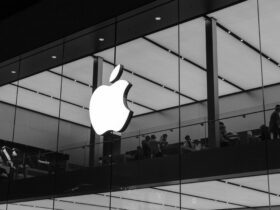Astronomers surely felt a few chills down their spine when they first discovered the 2024 YR4 asteroid last year in December, as this space rock clearly is no space dust. It’s the size of an imposing building, as it measures somewhere between 53 and 67 meters in diameter. While it’s classified as an Apollo-type (Earth-crossing) near-Earth object, it seems that someone up there still loves us and wants us around long-term.
Thankfully, the 2024 YR4 asteroid has only a bit more than a 1% chance of hitting Earth in 2032. While some people may say that it still means we’re in trouble, common sense tells us that there’s practically nothing to worry about.
2024 YR4 has a unique behavior
We all know that the James Webb Space Telescope operates in a totally different league than Hubble, and it proves it has just proven it once again after taking a closer look at the 2024 YR4 asteroid. SciTechDaily tells us that according to Webb’s new observations, 2024 YR4 behaves in a different way than larger asteroids normally do. To be more precise, the space rock has different thermal properties than other asteroids of its kind, meaning that it heats up and cools down at different rhythms than scientists expected. While it is believed at this point that the unusual thermal behavior has something to do with a combination of the very fast spin and lack of fine-grained sand on the surface of the 2024 YR4 asteroid, more information is needed for a final verdict.
No asteroids are on a collision course with Earth
The 2024 YR4 asteroid won’t hit us, most probably, and neither will any other space rock that could cause serious damage. We’re sorry to disappoint you if you were planning any party for the end of the world, but as of April 2025, astronomers don’t know any large asteroids that are on a collision course with our planet.
Even though scientists were a bit worried at first about the 2024 YR4 asteroid, close monitoring and scientific data revealed that there’s no reason to worry, as the space rock won’t collide with Earth. As for the purely theoretical possibility that 2024 YR4 will still hit us, NASA estimates that chance of being less than 1%, even though previously, the estimated chance of collision was a bit more than 3%.
However, astronomers will keep an eye on the 2024 YR4 asteroid, as they do in the case of many other space rocks. They constantly aim to refine the trajectory of such space rocks, and thankfully, there’s no known Doomsday asteroid with our planet’s name written on it.
We can definitely trust the advanced capabilities of the James Webb Space Telescope, as we’re talking about the most advanced space observatory ever built. Webb was designed to explore the Universe in infrared light with very high sensitivity. The massive 6.5-meter gold-coated mirror collects faint light from the earliest galaxies that illuminated the Cosmos, allowing it to see billions of years into the past — essentially acting like a time machine. Unlike Hubble, Webb is capable of operating far from Earth at Lagrange Point 2, about 1.5 million kilometers away, and is kept ultra-cold at -223°C due to a tennis-court-sized sunshield that is capable of blocking heat from the Sun, Earth, and itself. This extreme chill is essential for detecting faint heat signals from galaxies, newborn stars, and even exoplanets. James Webb is even capable of analyzing the atmospheres of these planets for water, carbon dioxide, and potential signs of life, making it a key player in the search for habitable worlds.
Interestingly enough, there’s a bit higher probability that the 2024 YR4 asteroid will collide with our Moon in December 2032 – a chance of 3.8%, to be more precise. Gladly, there aren’t any little green men with pointy years dwelling on our natural satellite to get their party spoiled.












Leave a Reply